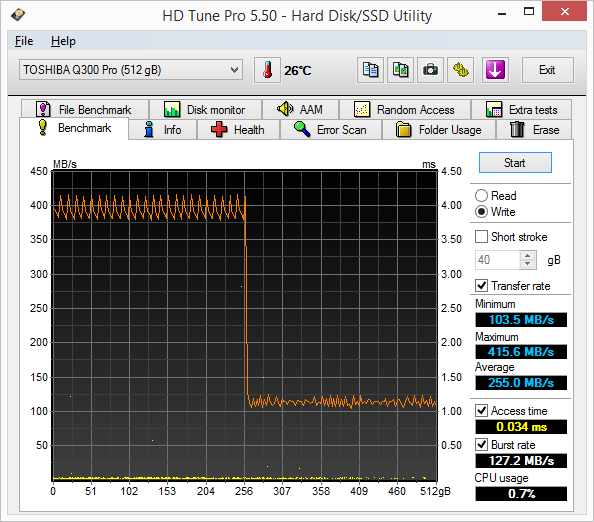Toshiba Q300 Pro 512GB MLC SSD Review
Toshiba recently launched two new SSDs for the entry-level and mainstream markets. Today, we look at the top-tier MLC-based Q300 Pro and find that it could be a serious contender in the market.
Why you can trust Tom's Hardware
A Closer Look
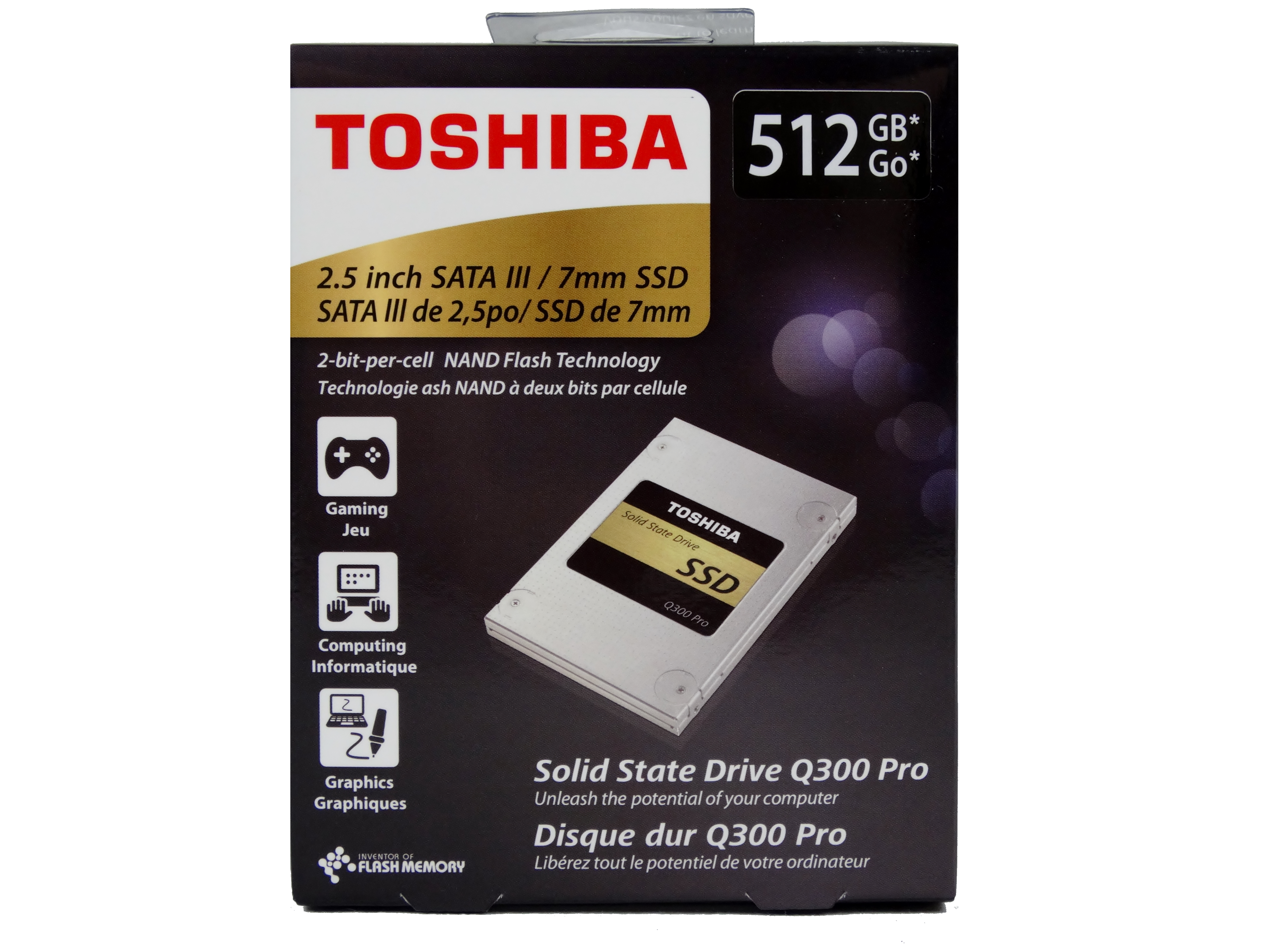
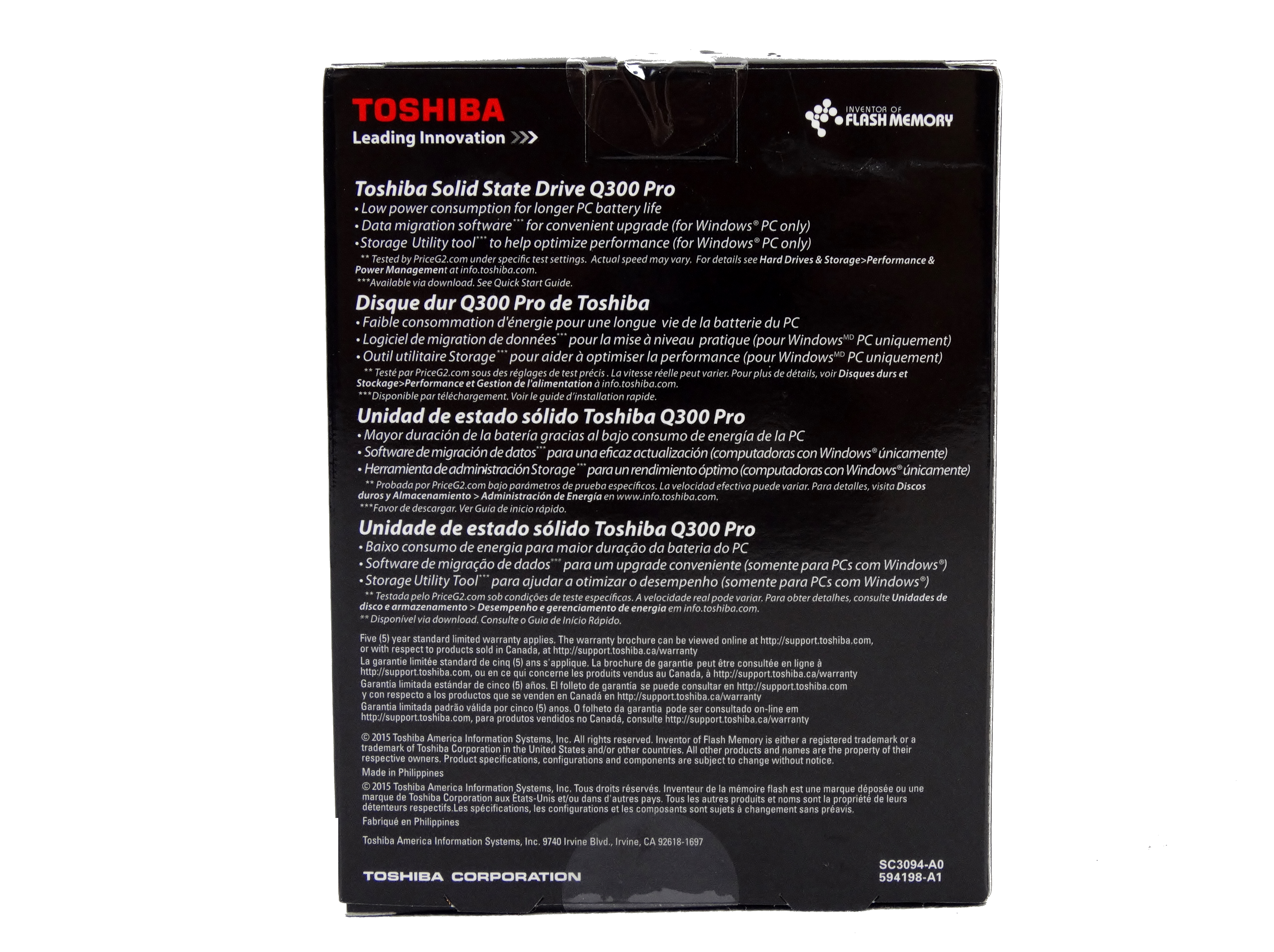
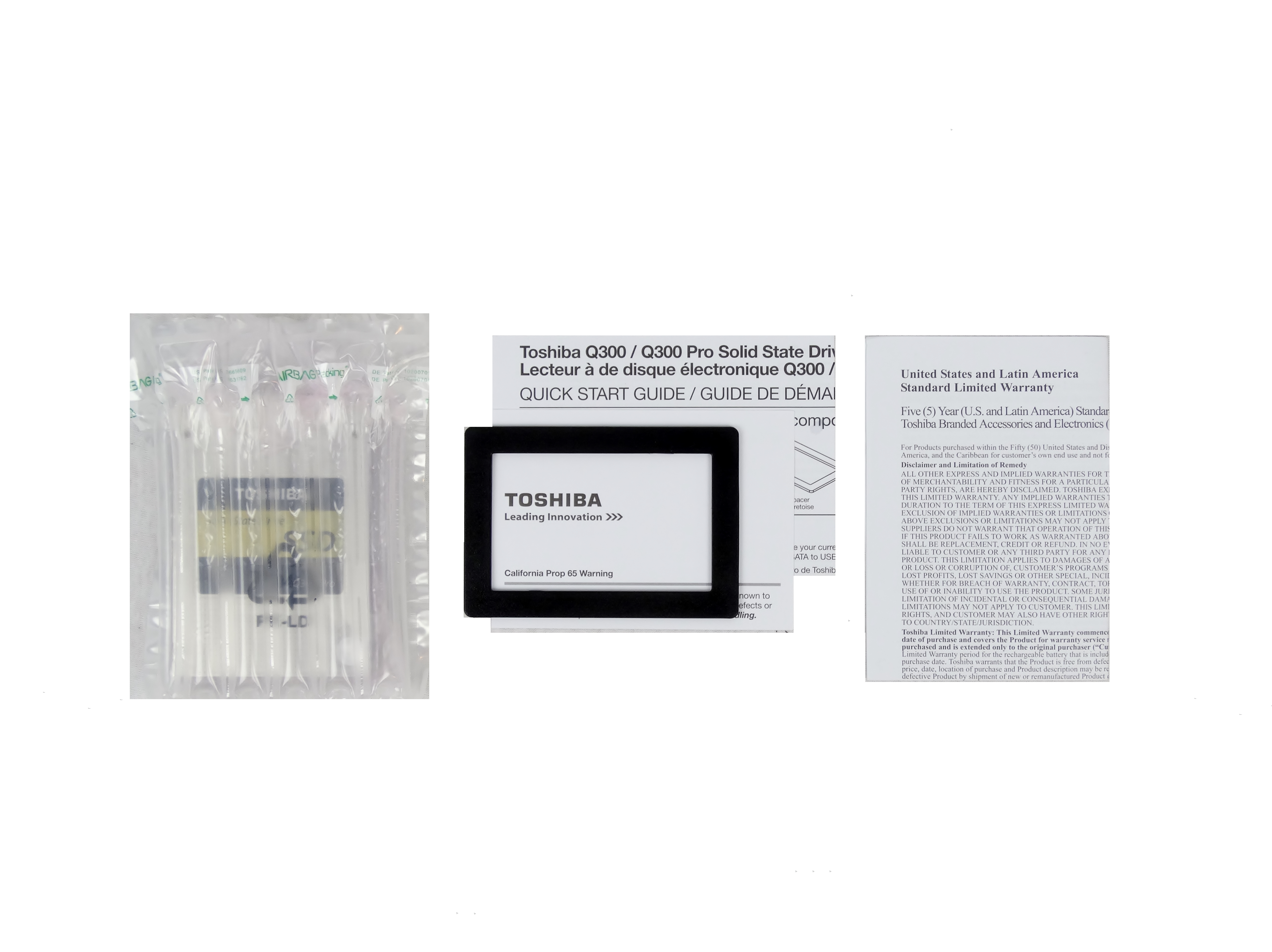
Toshiba's packaging only lists a few details about the drive, and doesn't include any performance data.
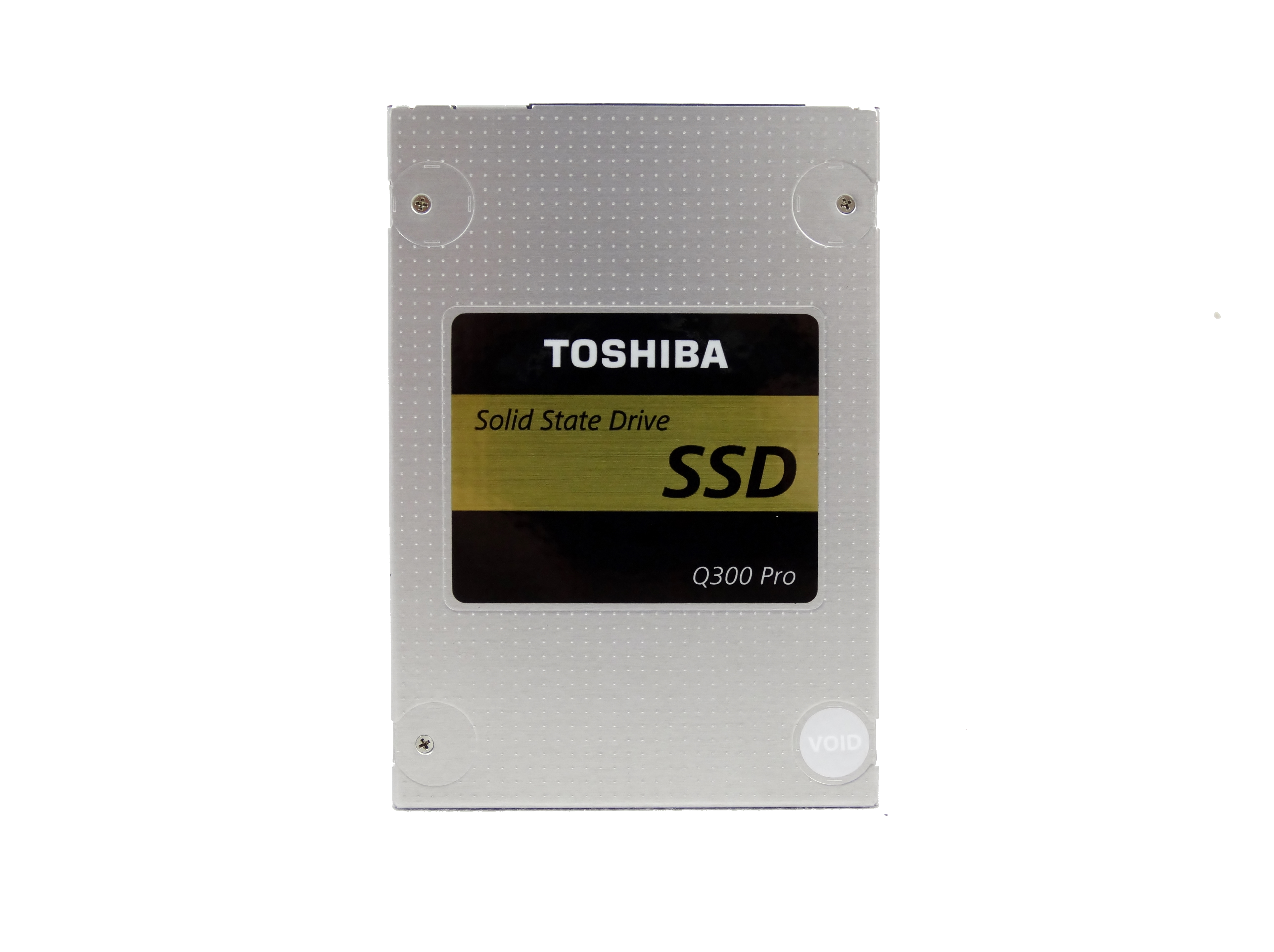
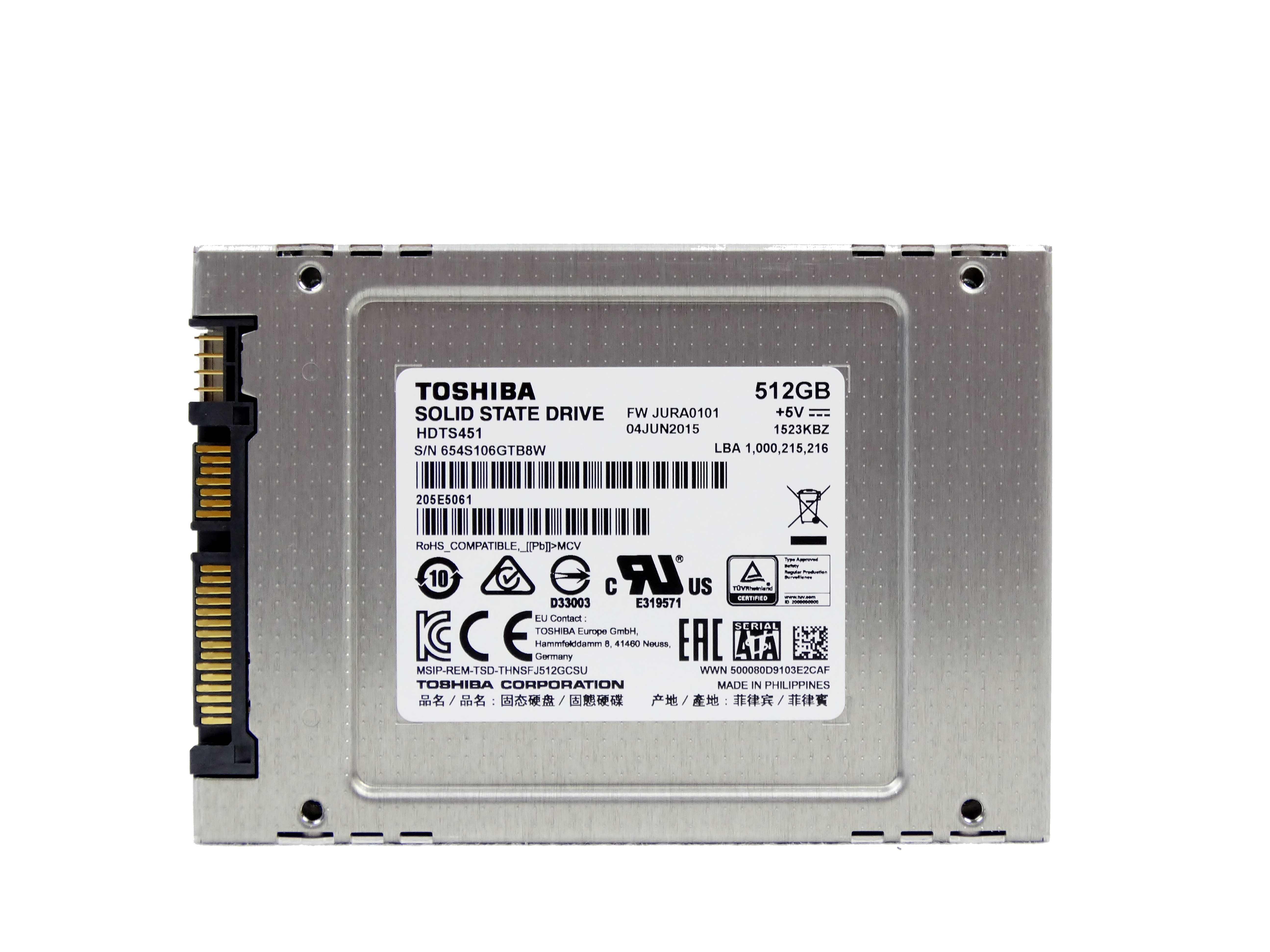
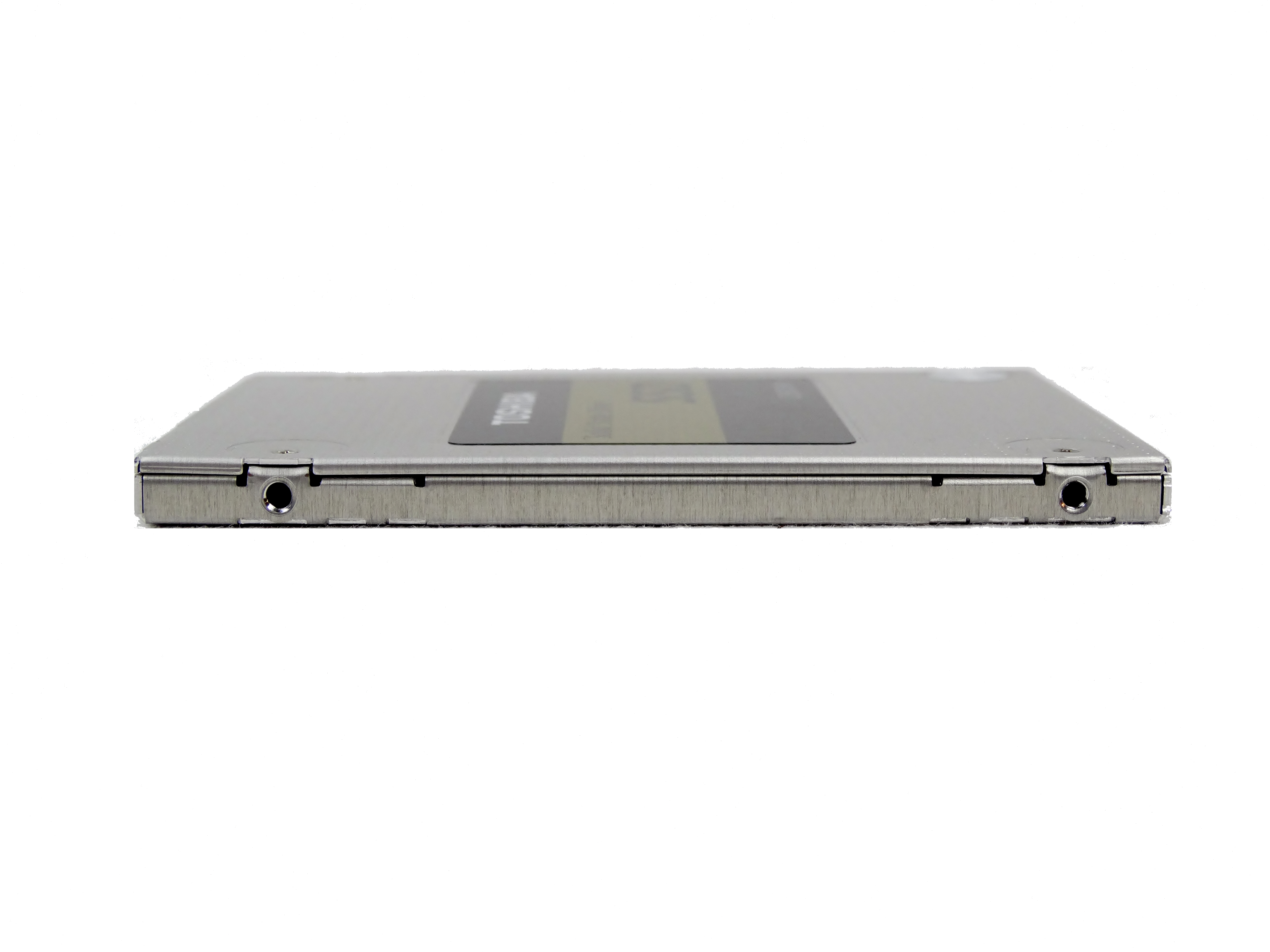
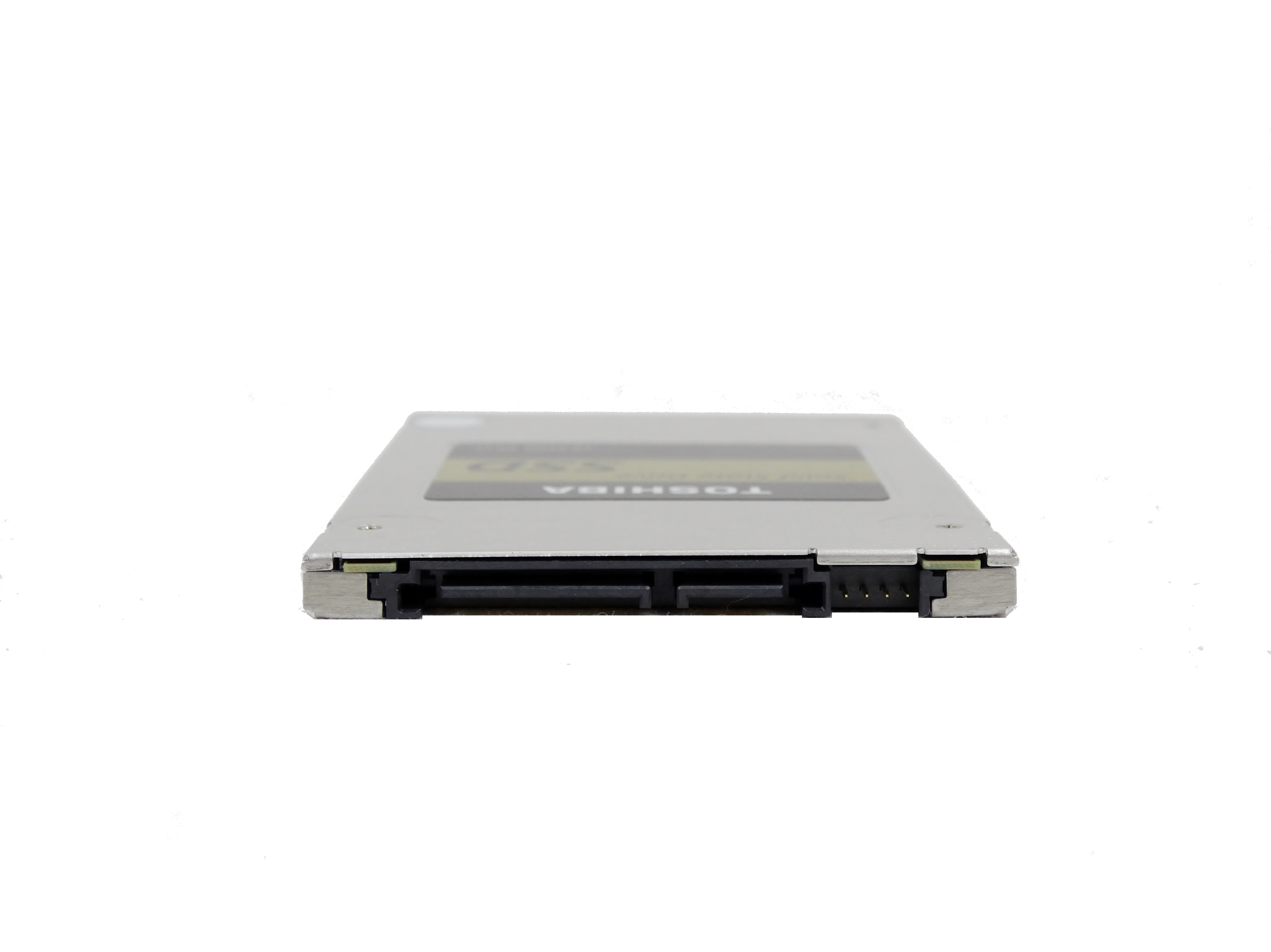
The Q300 Pro uses the same chassis design we've seen for a few of Toshiba's product generations.
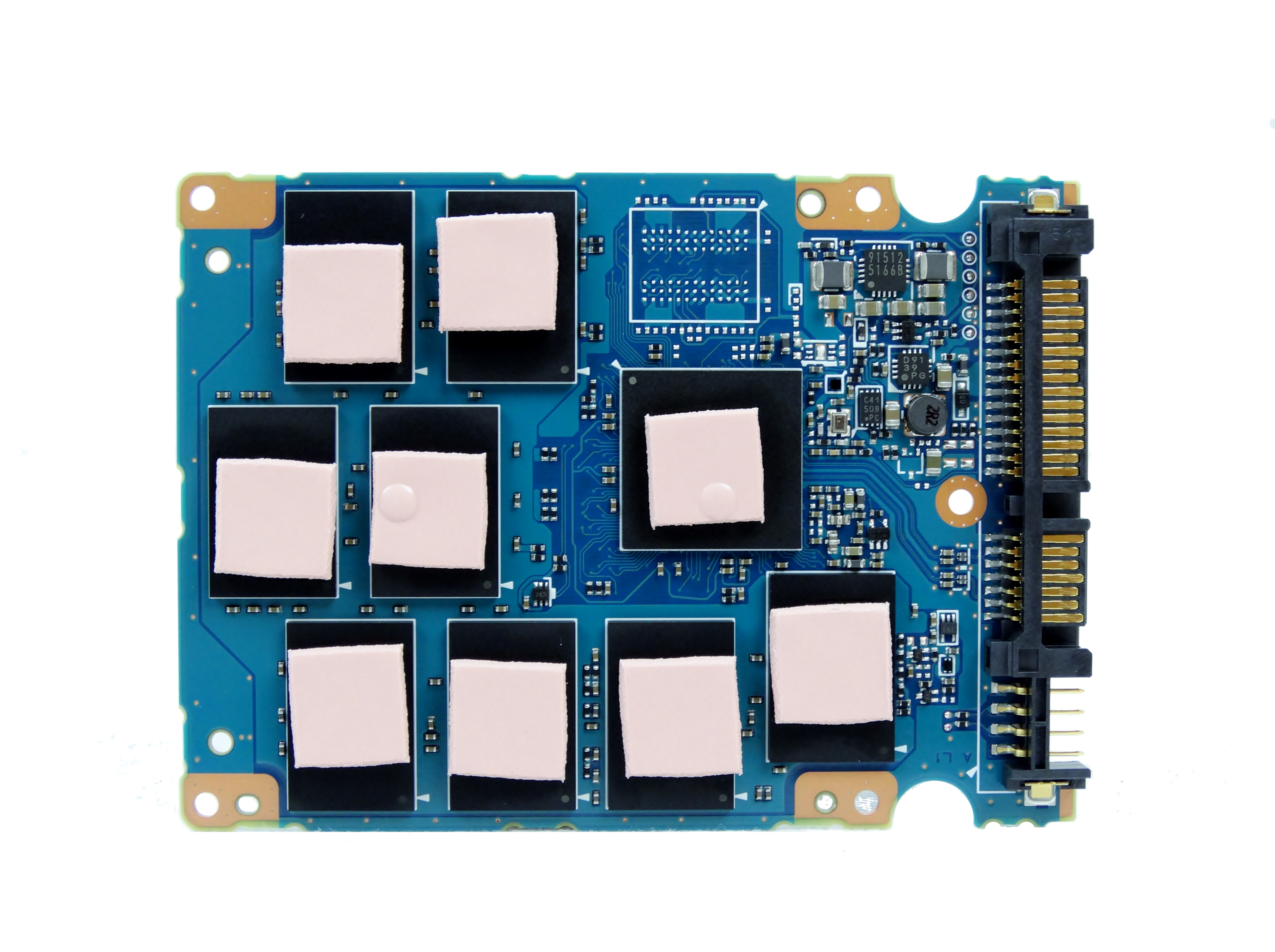

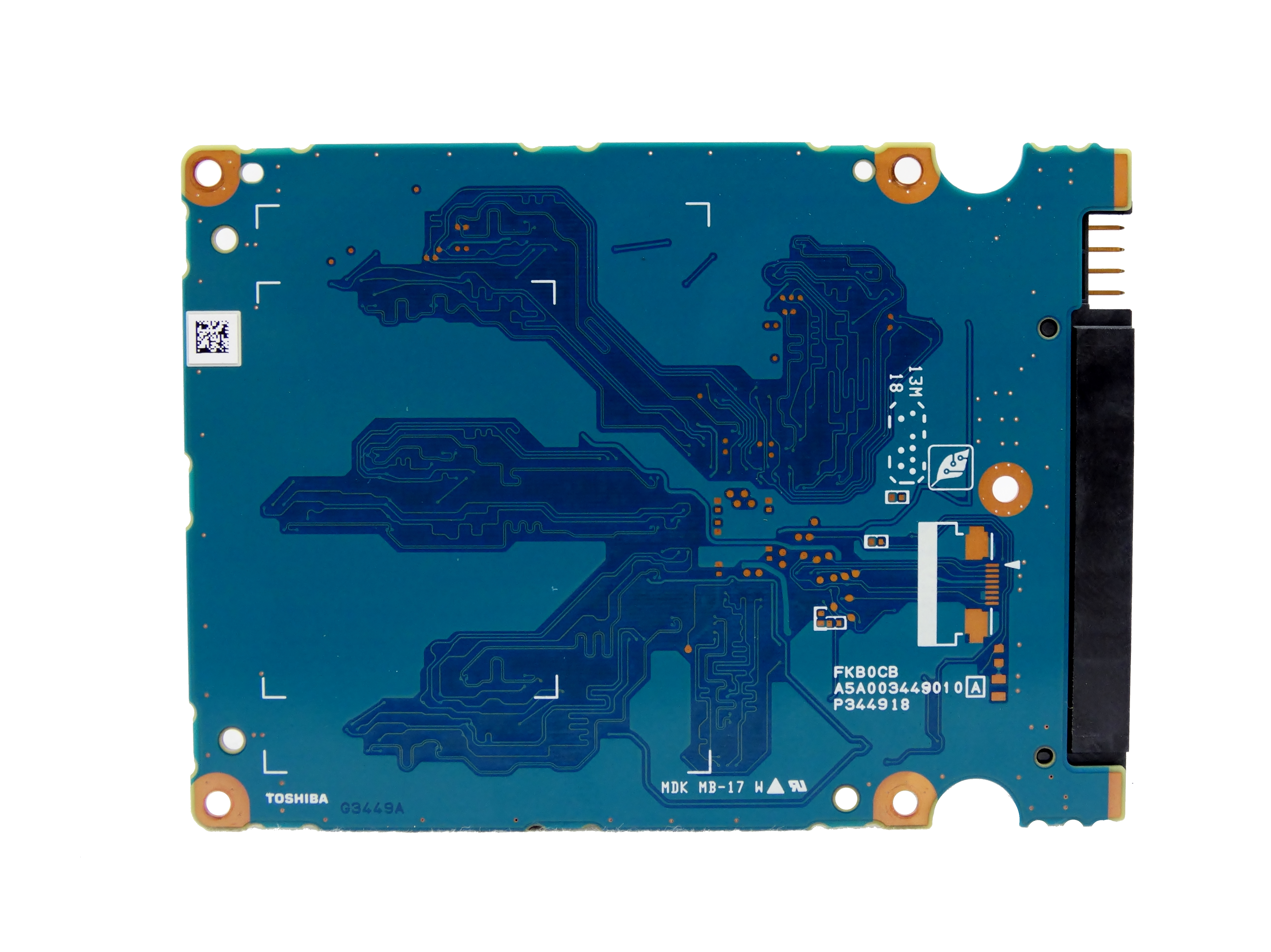



All of the components are on one side of the PCB. The NAND and controller are topped with thermal transfer material to help dissipate heat to the thin metal enclosure.
What about the DRAM buffer we normally see under the hood? As mentioned, this is a DRAM-less design, so the page table map normally cached there is held in flash instead. As a result, you'll see some random performance loss compared to other SSDs using the same flash.
Initial Performance Testing
This is a familiar sight for owners of OCZ SSDs, dating back to the Vertex 4 days. Adaptive SLC technology is notorious for its inconsistent sequential write performance when the drive is full of data. On the right side of the graph is a latency scale. There is a single 2.75ms outlier just before the Q300 Pro changes over from performance mode to a less aggressive state designed to reduce flash wear.

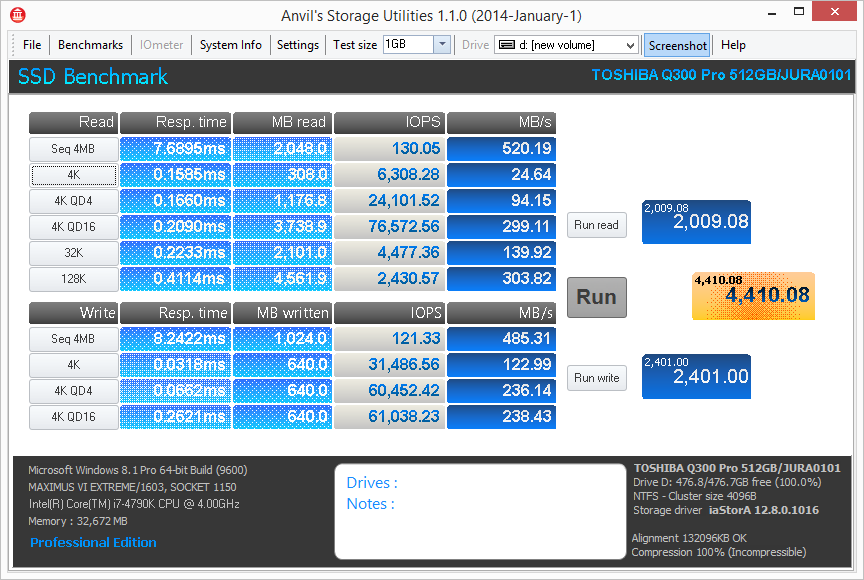
Toshiba's TC358790 controller doesn't give up performance when it reads or writes incompressible data. However, the Q300 with TLC flash does slow down writing incompressible data, just like the Phison S10-based products we've tested.
Get Tom's Hardware's best news and in-depth reviews, straight to your inbox.
Current page: A Closer Look
Prev Page Specifications, Pricing, Warranty And Accessories Next Page Four-Corner Testing
Chris Ramseyer was a senior contributing editor for Tom's Hardware. He tested and reviewed consumer storage.
-
apache_lives When iI think Toshiba SSDs i think OCZ. OCZ is rubbish, do i trust this Toshiba product? NOReply -
stirrupchup Thanks for the review.Reply
I ended up skipping this drive and going for another one, and having read this review, I'm kinda glad I skipped it. Seems to be nothing special, and not worth the price. -
mortsmi7 "In this market, to sell products you need to either have the fastest SSD or offer the best value."Reply
I guess I'm the only one that prefers reliability over either of those factors, especially for a system drive. All SSD's fall under the fast category, that there is good enough for me. And as far quality is concerned, you get what you pay for to a certain extent. -
kalmquist The 256GB Q300 Pro is currently selling for $100, which is less than half the price of the 512GB unit reviewed here. That doesn't make any sense if both drives use the same controller and only differ in the abount of flash memory installed.Reply
-
3ogdy apache_lives. That was EXACTLY may thought. And yeah, yeah, yeah. "Enough with the FUD already...", but the stuff is there. The thing is, Toshiba actually deserves a chance. If problems arise, it's Toshiba's customer support you have to deal with, not OCZ. Moreover, this is a Toshiba product entirely, I believe, which should be at the other end of the spectrum when compared to utter crappy products from OCZ. People over at OCZ should look up "reliability" in a dictionary, ffs.Reply -
ssdpro +1 to OCZ being awful. I wouldn't trust Toshiba if they tolerate OCZ. I mean come on, their ARC 100 and Radeon drives had 0 day defects with ass-bottom reviews. Their Trion drives get 2 or 3 stars out of 5 at Amazon and Newegg. Ben from OCZ support responds to people with form responses that are ridiculous. Customer - "Drive died after 3 weeks, don't purchase" OCZ - "We value your purchase. Did you check the sata cable and update the firmware?" Come on guys, if there are a dozen reviews of dead drives stop responding with form spam and saying it is fixed with a firmware update. Firmware updates help replacements but don't mitigate the failure.Reply -
blazorthon Reply+1 to OCZ being awful. I wouldn't trust Toshiba if they tolerate OCZ. I mean come on, their ARC 100 and Radeon drives had 0 day defects with ass-bottom reviews. Their Trion drives get 2 or 3 stars out of 5 at Amazon and Newegg. Ben from OCZ support responds to people with form responses that are ridiculous. Customer - "Drive died after 3 weeks, don't purchase" OCZ - "We value your purchase. Did you check the sata cable and update the firmware?" Come on guys, if there are a dozen reviews of dead drives stop responding with form spam and saying it is fixed with a firmware update. Firmware updates help replacements but don't mitigate the failure.
Trion 100 is horrible, Trion 150 is slightly better but still not great. As far as I'm concerned, only Samsung has a TLC drive even worth considering.
Is this what you're referring to by issues with Arc 100 and Radeon?
http://www.anandtech.com/show/8965/ocz-releases-critical-firmware-updates-for-arc-100-radeon-r7-ssds
Most of the reviews I read on Arc 100 were very positive, so I bought one about a year ago and haven't had any problems with it. Mine is a 240GB model, this article says that the 480GB models were the ones with issues, maybe that's why. Still, so far, this is the only problem I've read about with Arc 100 drives. Are there other issues?
